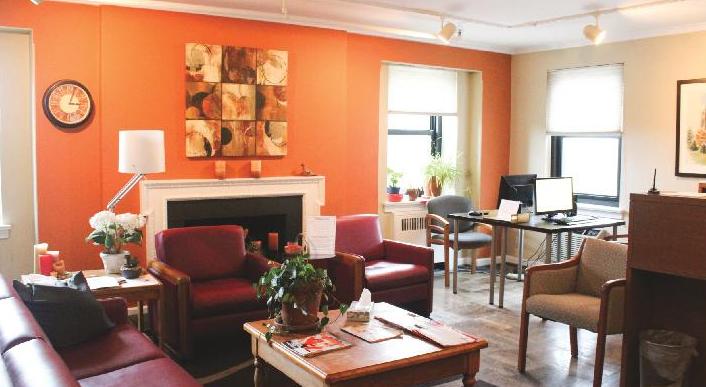Understanding the symptoms of SAD
As the weather turns cold and the sky grays, John McCall ’20 doesn’t deny the trouble he faces trying to get out of bed in the morning.
“With it getting darker earlier and being colder, it makes me feel more tired and less productive,” McCall said.
Many students like McCall are dealing with the negative impact of seasonal changes, struggling to keep motivated as winter settles in.
For some students, though, symptoms are severe enough to contribute to a diagnosis of Seasonal Affective Disorder, more commonly known as SAD.
According to the National Institute of Mental Health, individuals with SAD experience depressive episodes, typically starting in the late fall or early winter, that lift during the spring and summer seasons.
Symptoms range from feelings of hopelessness, decreased energy, fatigue, difficulty concentrating, to avoidance of social situations and suicidal thoughts.
Kris Brightbill, a licensed professional counselor in West Chester, said it is wise to identify symptoms and the degree to which they are interfering with daily functioning.
“Symptoms and signs of SAD are easily researched,” said Brightbill. “Some clients are able to manage their symptoms by lifestyle change when the SAD is identified. It is often self diagnosed.”
Brightbill said possible lifestyle changes can be made to help manage symptoms. These include exposure to UV light, exercising more frequently and outside, planning a trip to a warmer, sunny climate, talking with a trusted friend or professional, or joining a support group.
“Most people experience some relief in discussing their struggle with someone who responds with empathy and compassion,” Brightbill said. “That can be a peer, friend, parent, spouse, partner, but it can also require a professional to help access a comprehensive treatment plan.”
Students can seek professional help on campus from Counseling and Psychological Services (CAPS), located in Merion Gardens.
According to CAPS Director Greg Nicholls, Ph.D., CAPS is busiest during the months of October and November, but there are multiple reasons as to why that is the case, including academic stress combined with seasonal changes.
“That’s due mostly to building stress as academic pressure mounts, and so many weeks go by without a break,” Nicholls said. “Certainly, the increasing darkness doesn’t help, and some students will directly tell us that they believe their lower mood is partly due to it.”
While January is also a cold, dark month in Philadelphia, most students spend much of the month away from school and with their families, Nicholls said. With a break that long, many students come back to campus feeling refreshed and well-rested.
“When they get back, academic stress is absent,” Nicholls said, “so only those very sensitive to weather will struggle.”
From late November through the end of February, CAPS offers students already in counseling there the opportunity to use a light therapy box for up to 20 minutes in a session. Students can read or study while sitting under the large lamp, which emits bright light that mimics outdoor light. This light therapy has been shown to have positive benefits in addressing many health issues.
“Generally, they report a lift in mood after a short 15 to 20 minute dose,” Nicholls said.
Carlee Harbright ’19, who said the seasonal changes make her feel more lethargic, bought her own light therapy box.
Having a light box has helped improve my overall mood,” Harbright said. “I find myself less sad when I use the light box consecutively. It also helps boost my energy level, so I am less lethargic throughout the day.”














































